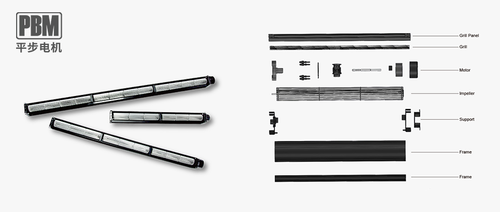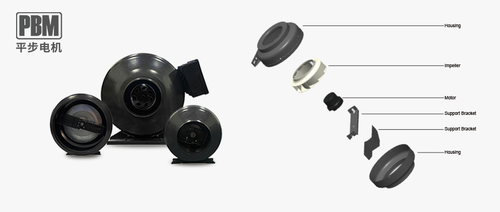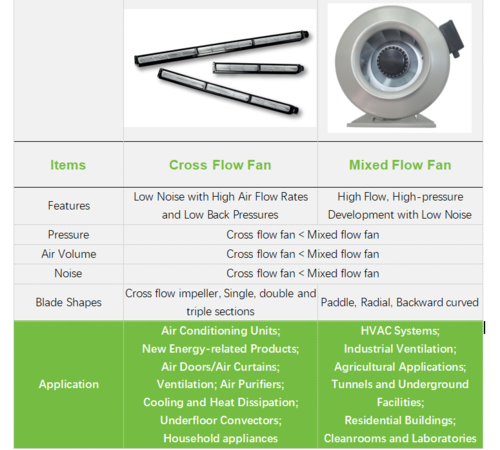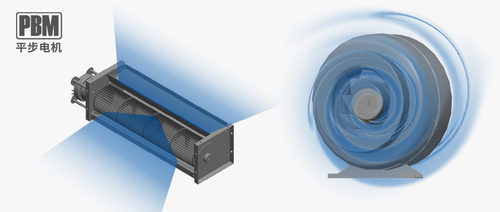All Rights Reserved Privacy Policy Site Map
FOCUS ON EC FAN ONLY
FOCUS ON EC FAN ONLY
Have you ever been puzzled by the terms "Cross Flow Fan" and "Mixed Flow Fan," not knowing exactly what the differences are between them? Although both boast powerful airflow, they each have distinct characteristics and are suitable for different scenarios. Today, let's delve into the world of these two types of fans and explore their mysteries!

Cross flow Fan, also known as tangential or transverse blower,is a type of fan that moves air perpendicularly across the fan’s axis, unlike axial fans (which move air parallel to the axis) or centrifugal fans (which move air radially). cross flow fan intakes air from one side, accelerates it through the impeller, and exhausts it from the other side, all within the same plane. This design allows the Cross Flow Fan to create a uniform airflow distribution, akin to perfect footprints left by a dancer on stage.
Cross Flow Fans feature a simple structure, Cross flow fans typically have a long cylindrical shape with plastic or aluminium alloy blades arranged around the circumference.compact size, and high dynamic pressure coefficient which helps in directing the airflow, enabling them to achieve long distances. Hence, they excel in various ventilation and air exchange scenarios, such as air conditioning systems, air curtains, dryers, hairdryers, household appliances, and grain combine harvesters, providing a continuous supply of fresh air.

Mixed flow fan, also known as duct fan, combines the characteristics of axial-flow and centrifugal fans. Its appearance resembles that of a traditional axial-flow fan. The casing may have an open inlet, but more commonly, it has a right-angled bent shape, allowing the motor to be placed outside the duct. This design makes installation and use of Mixed Flow Fans more convenient and flexible.
Mixed Flow Fans have a higher pressure coefficient than axial-flow fans and a larger flow coefficient than centrifugal fans. This allows them to perform exceptionally well in scenarios where both pressure and flow are "just right." Whether it's gas conveying, ventilation, or smoke exhaust, Mixed Flow Fans can handle them with ease. Moreover, their easy and convenient installation further enhances their popularity in practical applications.
Mixed Flow Fans are widely used in industrial and civil building ventilation and dust removal scenarios. They can operate stably in various environments, providing people with a comfortable and safe living environment. Imagine in the hot summer, Mixed Flow Fans bring cool breezes to workers in factory workshops. In the cold winter, they can deliver warm air indoors, creating a cozy atmosphere.


Advantages between Mixed Flow Fan and Cross Flow Fan
The air outlet is uniform:Cross flow fan design allows for a broad and consistent air distribution, making them suitable for applications where even airflow is essential;
Elongated Shape:Their shape makes them ideal for use in narrow spaces where traditional fans might not fit;
Low Noise:Suitable for environments requiring quiet operation,such as bedroom,rest room and so on.
High Efficiency:They are more efficient than axial fans for moderate pressure applications and provide better airflow than centrifugal fans at the same pressure;
Compact Design:compact than centrifugal fans, making them suitable for installations where space is limited;
Low Noise:They tend to produce less noise compared to axial fans when operating;
Overall, Cross Flow Fans and Mixed Flow Fans are both outstanding players in the world of fans. They each have unique performance and characteristics, playing important roles in different scenarios. Whether it's the smooth Cross Flow Fan or the powerful Mixed Flow Fan, they both bring comfort and convenience to our lives in their own ways.
If you’re ready to choose a fan or need further assistance, please reply to this email (sales@pbmmf.com)or contact me directly. We’re here to help with any further questions or to assist with the purchasing process.
By continuing to use the site you agree to our privacy policy Terms and Conditions.